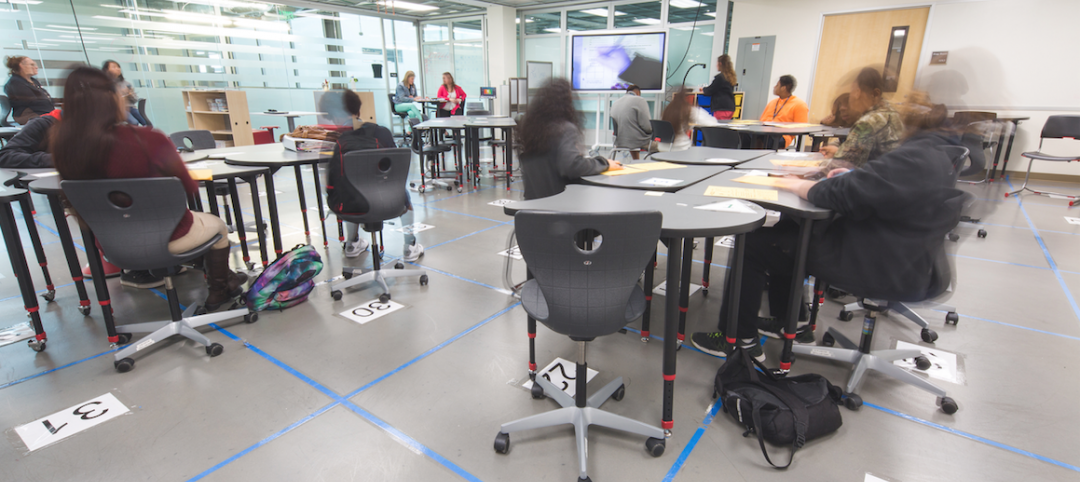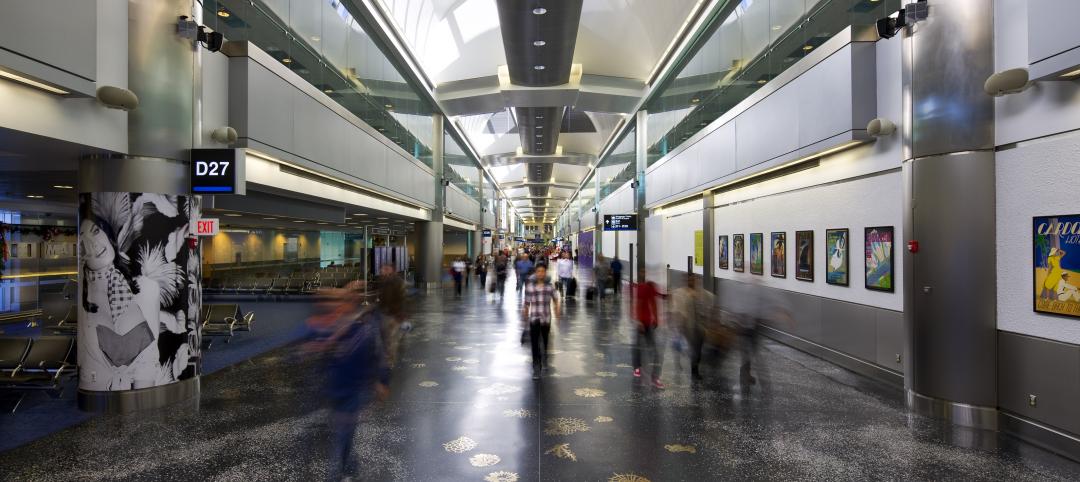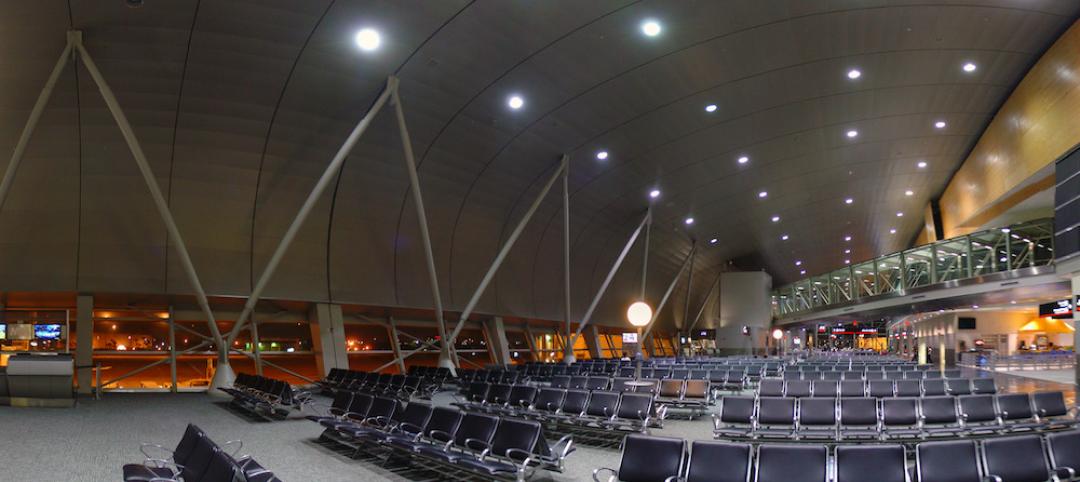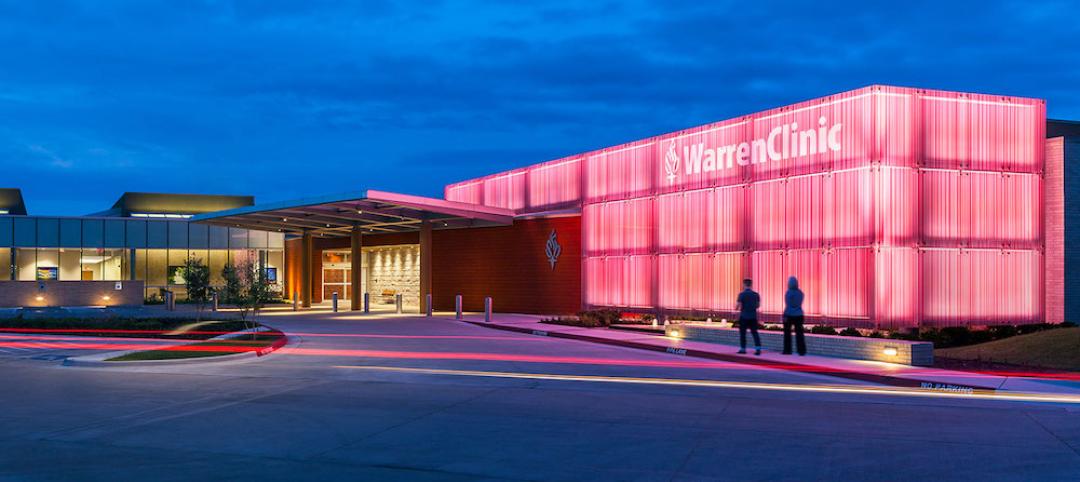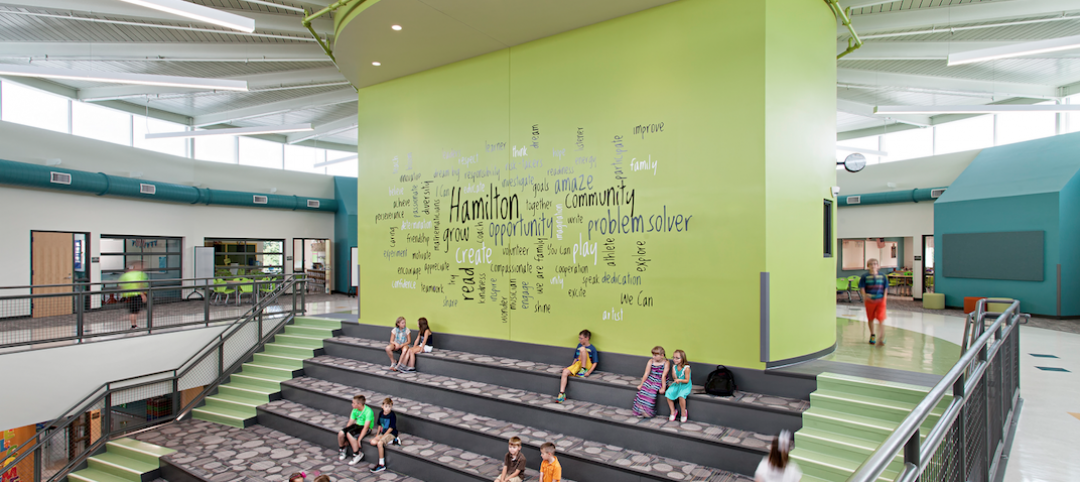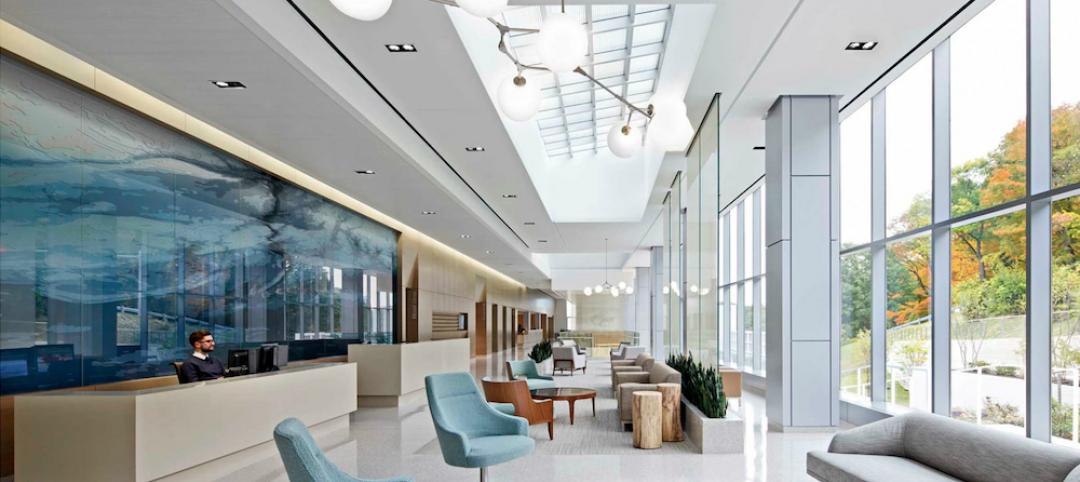Willmott’s Ghost, the recently opened restaurant occupying the ground floor of The Spheres on Amazon’s campus in Seattle, evokes different images simultaneously.
The 1,900-sf, 50-seat restaurant was named after a thistle-like flower christened in honor of the Victorian horticulturalist Ellen Ann Willmott. The restaurant’s cuisine leans Italian, and its color scheme has been said to resemble a Margherita pizza. One review described its modernist design, enclosed as it is inside a spherical envelope, as being like an aquarium. Heliotrope Architects, the restaurant’s architect, has called the project “a ship in a bottle.”
The restaurant, which opened last October, is one of only three spaces in The Spheres open to the public. Its chef, Renee Erickson, is a regional star whose rapidly expanding food and beverage portfolio includes Deep Dive, a bar in The Sphere’s basement. (Her Sea Creatures restaurant group is the exclusive food operator of both venues.)
Willmott’s Ghost is in line with Erickson’s typically upscale, light-filled style, “with white marble accents yet filtered through a futuristic lens,” according to The Seattle Times’ review of the restaurant last month.

The 1,900-sf restaurant seats around 50 people, and its interior design was dictated by the curved space of the building. Image: Heliotrope Architects
Amazon Spheres, which opened 14 months ago, consists of three intersecting glass domes that serve as lounges and workplaces for Amazon’s employees. The domes also house more than 40,000 plants from 50 countries.
The restaurant’s design team—which included the interior design firm Price Erickson and the general contractor Dovetail—drew its inspiration from the NBBJ-designed Spheres’ geometry, as well as the airy environments of art museums and galleries.
Enclosed within the domes’ envelope, much of the architecture for the restaurant was dictated by curves: Curved leather banquettes and booths hug the glass perimeter. Curved walls clad in painted wood pickets, inspired by the knurling on the sides of coins, define the dining room. Curved bars with Italian marble countertops fill the space.

The restaurant's pastel palette and modernist design are in stark contrast to the forest of trees and plants above it. Image: Kevin Scott
“We made craft the main ingredient of the restaurant buildout,” explains Jeremy Price, a Principal with Price Erickson. That buildout was complicated by the curved nature of the building and a sophisticated mechanical system that runs The Spheres’ complex and keeps alive the plants and trees that form a three-story botanical garden above the restaurant.
The restaurant’s pastel-colored interior palette favors whites, pinks, mints, and forest greens. For example, pink Moroccan tiles are a custom color from Ann Sacks, a specialty supplier. Brass light fixtures illuminate original artwork by Ellen Lesperance. Above the tables hang crescent pendant lights by Lee Broom.
Related Stories
Architects | Aug 2, 2016
Bradley Lukanic named CannonDesign's CEO
In his new role, Lukanic takes helm of an experienced leadership team crafting and achieving optimal short- and long-term strategies and business outcomes
| Aug 1, 2016
K-12 SCHOOL GIANTS: In a new era of K-12 education, flexibility is crucial to design
Space flexibility is critical to classroom design. Spaces have to be adaptable, even allowing for drastic changes such as a doubling of classroom size.
| Jul 29, 2016
AIRPORT FACILITIES GIANTS: Airports binge on construction during busy year for travel
Terminal construction will grow by nearly $1 billion this year, and it will keep increasing. Airports are expanding and modernizing their facilities to keep passengers moving.
| Jul 29, 2016
Top 35 Airport Terminal Architecture and A/E Firms
Corgan, HOK, and Gensler top Building Design+Construction’s annual ranking of the nation’s largest airport terminal architecture and A/E firms, as reported in the 2016 Giants 300 Report.
Architects | Jul 28, 2016
Connecting the dots: Architecture and design in a changing world
What do Tesla, Airbnb and Amazon have in common? They’re all shifting the paradigm for quality of life and the built environment, as CallisonRTKL senior associate VP Jayson Lee explains.
| Jul 26, 2016
ENGINEERING GIANTS: Firms continue to push innovation
Trends include 3D printing, modular hospitals, and fluid dampers.
| Jul 26, 2016
Top 80 Architecture/Engineering firms
Stantec, HOK, and Callison RTKL once again top Building Design+Construction's 2016 ranking of the largest architecture/engineering firms in the United States.
| Jul 25, 2016
Top 35 Engineering/Architecture Firms
AECOM, Jacobs, and Thornton Tomasetti head Building Design+Construction's 2016 ranking of the largest engineering/architecture firms in the United States.
| Jul 25, 2016
Top 100 Architecture Firms
Gensler surpasses $1.1 billion in revenue, topping Building Design+Construction’s annual ranking of the nation’s largest architecture firms, as reported in the 2016 Giants 300 Report.
Healthcare Facilities | Jul 25, 2016
AIA selects seven winners of healthcare building design award
The National Healthcare Design Awards recognizes functional hospital projects that solve aesthetic, civic, urban, and social concerns. Recipients were selected in three categories this year.




